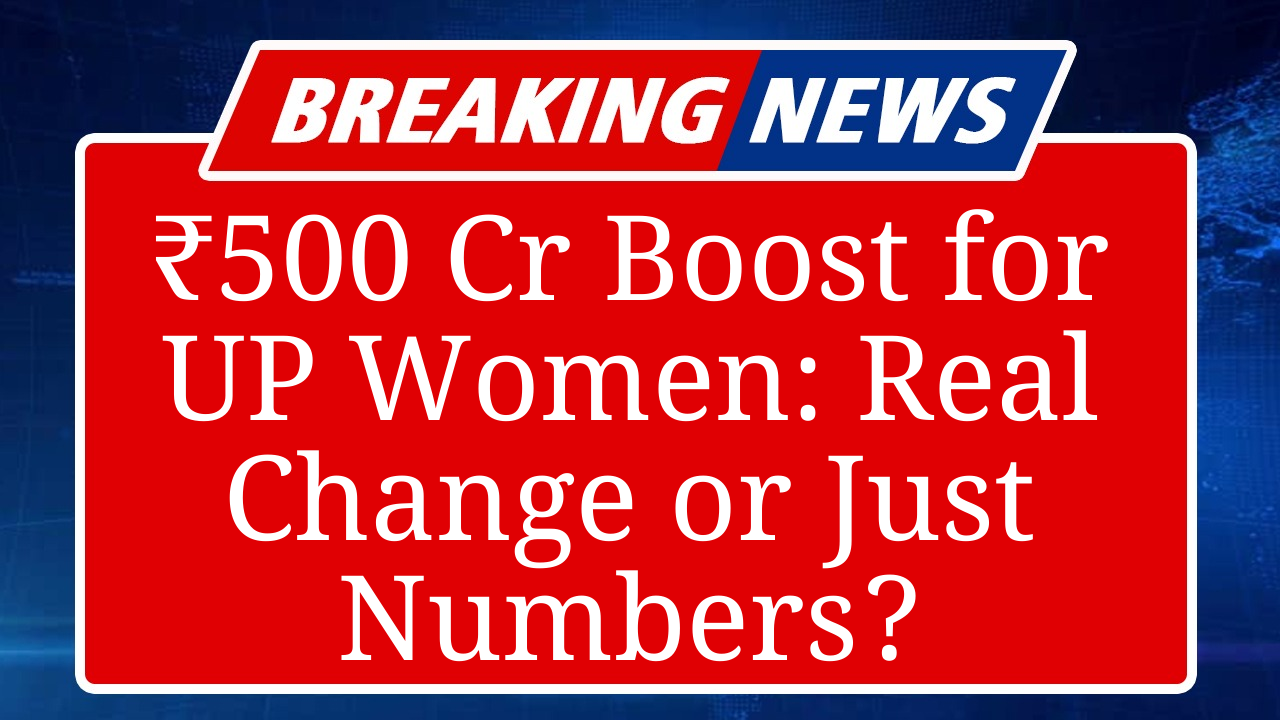“Uttar Pradesh has increased its gender budget by ₹500 crore, focusing on women’s welfare, education, and empowerment. Key initiatives include enhanced funding for Mission Shakti, healthcare, and skilling programs. Despite the rise, challenges like data gaps and underutilization persist, raising questions about effective implementation and impact on women’s socio-economic progress in the state.”
UP’s ₹500 Crore Push for Women’s Empowerment
Uttar Pradesh has announced a significant ₹500 crore increase in its gender budget for the fiscal year 2025-26, signaling a robust commitment to women’s welfare and empowerment. This hike brings the state’s gender budget to a new high, aligning with the broader national trend of prioritizing women-led development. The funds are earmarked for a range of initiatives, including healthcare, education, skill development, and safety programs tailored for women and girls.
A key focus of this budget is the enhancement of the Mission Shakti program, which has been allocated additional resources to strengthen women’s safety and empowerment. The program’s sub-schemes, Sambal and Samarthya, aim to address safety concerns and promote economic independence. Sambal, covering initiatives like Beti Bachao Beti Padhao and Women’s Helpline, has seen a 12% increase in funding, while Samarthya, which includes schemes like Pradhan Mantri Matru Vandana Yojana, focuses on empowering women through hostels and creches. However, Samarthya’s allocation has faced a slight dip, raising concerns about sustained support for long-term empowerment projects.
The budget also emphasizes healthcare, with increased allocations for schemes like Saksham Anganwadi and POSHAN 2.0, aimed at improving nutrition outcomes for women and adolescent girls. Despite a marginal rise from ₹20,554.31 crore in 2023-24 to ₹21,200 crore in 2024-25, experts argue that the increase is insufficient given the scale of nutritional challenges highlighted by the National Family Health Survey (2019-21). The survey underscored poor nutritional outcomes among women, emphasizing the need for a healthier workforce to boost economic productivity.
Education and skilling remain critical pillars of the budget. The state has prioritized programs to reduce dropout rates among girls, particularly in rural areas, and to enhance women’s participation in non-traditional sectors. Initiatives like the NAMO Drone Didi program, which received a near 50% hike from ₹500 crore to ₹950 crore, aim to train women in self-help groups to operate drones for agricultural purposes. However, fund utilization remains a challenge, with revised estimates for 2024-25 showing only ₹250 crore spent under this scheme, highlighting implementation gaps.
The budget also addresses women’s workforce participation, which stands at 41.7% in Uttar Pradesh, significantly lower than the national male participation rate of 79%. Schemes like the Mahatma Gandhi National Rural Employment Guarantee Scheme (MGNREGS), which allocates 57.8% of person-days to women, have received a funding boost to ₹40,000 crore. Yet, only 33.6% of MGNREGS funds are reflected in the gender budget, indicating a discrepancy between actual benefits and reported allocations.
Despite the increased funding, challenges persist. Data gaps remain a significant hurdle, with officials noting the absence of gender-disaggregated data for many schemes, complicating effective planning. For instance, while PMAY-G prioritizes women for housing ownership, only 73% of houses are registered in women’s names, raising questions about the scheme’s gender-specific impact. Experts like Arvind Mohan, a professor at Lucknow University, have emphasized that accurate data is crucial for targeted interventions, particularly in a state as diverse as Uttar Pradesh.
Digital literacy is another area of concern. With many welfare schemes relying on digital platforms, women, especially from marginalized communities, face barriers due to low digital literacy. The budget includes provisions for digital education, but critics argue that more robust investments are needed to bridge this gap. Community-led initiatives, inspired by models like Kerala’s Kudumbashree mission, could improve outreach and effectiveness, ensuring funds translate into tangible benefits.
The state’s gender budgeting efforts also face scrutiny for their limited scope. While the ₹500 crore hike is a step forward, the gender budget constitutes only a fraction of the total state budget, echoing national trends where gender budgets hover between 4-6%. Experts call for a more comprehensive approach, integrating gender considerations into sectors like agriculture and infrastructure to address systemic inequities. For instance, only 13.9% of landowners in Uttar Pradesh are women, despite 80% of women being involved in agriculture, highlighting the need for targeted agricultural schemes.
The increased allocation reflects Uttar Pradesh’s alignment with national goals, such as Sustainable Development Goal 5 (gender equality). However, without addressing structural barriers like societal norms, inadequate infrastructure, and procedural complexities, the impact of this budget hike may remain limited. Transparent monitoring systems and gender audits could enhance accountability, ensuring that the ₹500 crore translates into meaningful change for women across the state.
Disclaimer: This article is based on publicly available information from government announcements, news reports, and expert analyses. Data and figures are sourced from reliable publications like The Hindu, Hindustan Times, and ORF, as well as government budget statements. Readers are advised to verify details with official sources for the most accurate and up-to-date information.

